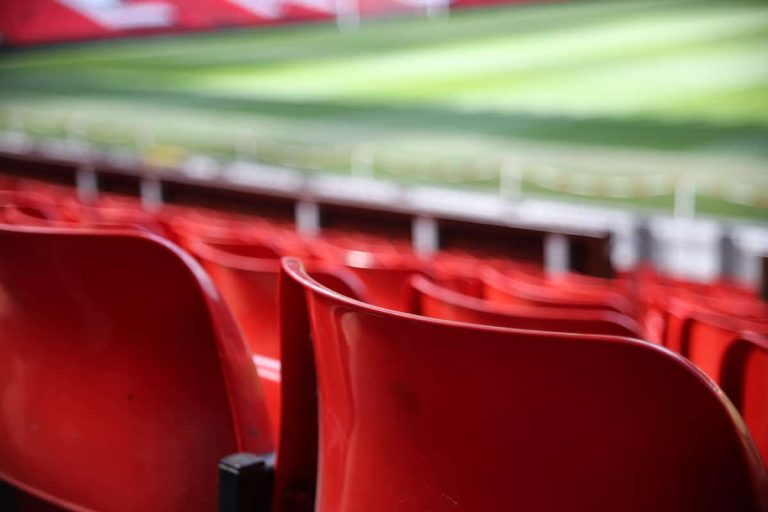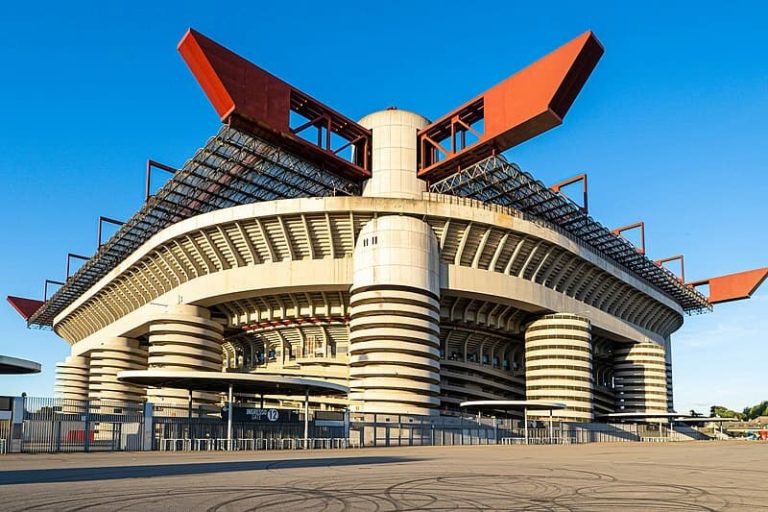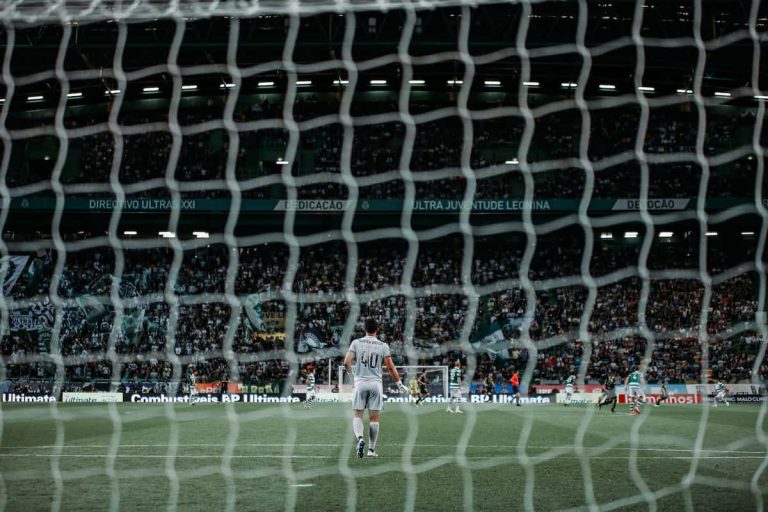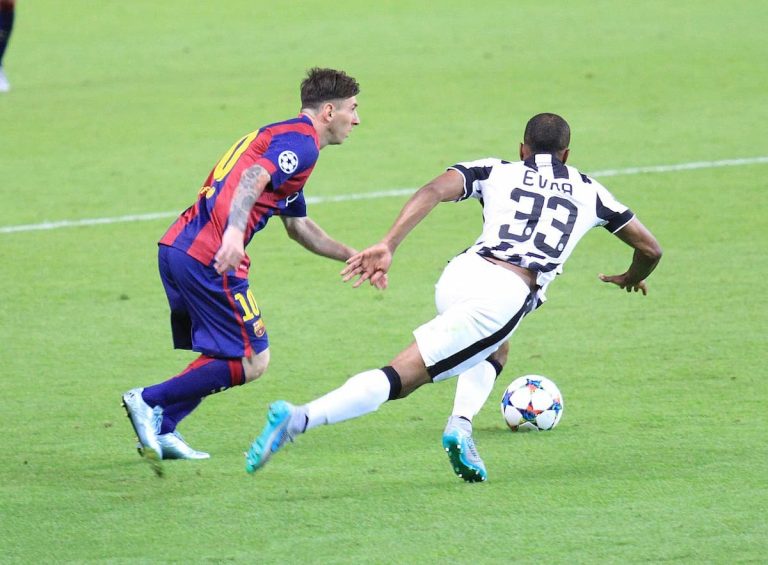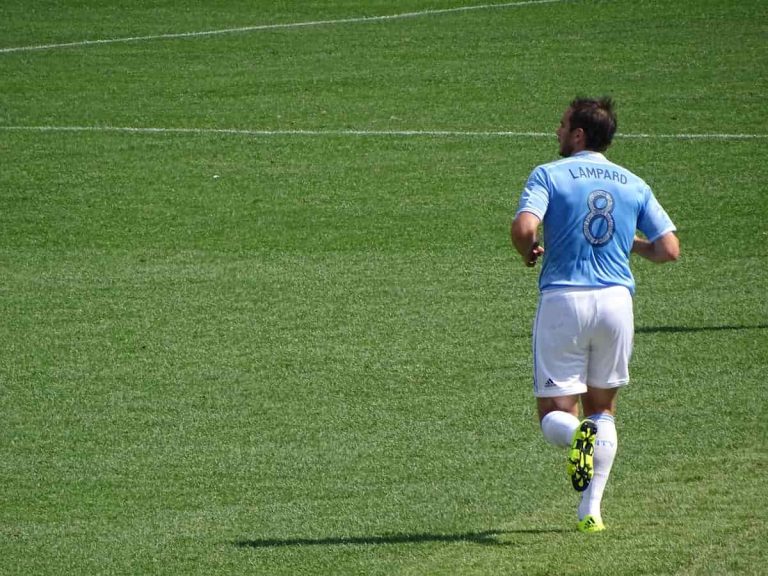Who Are the Most Tactical Football Managers?
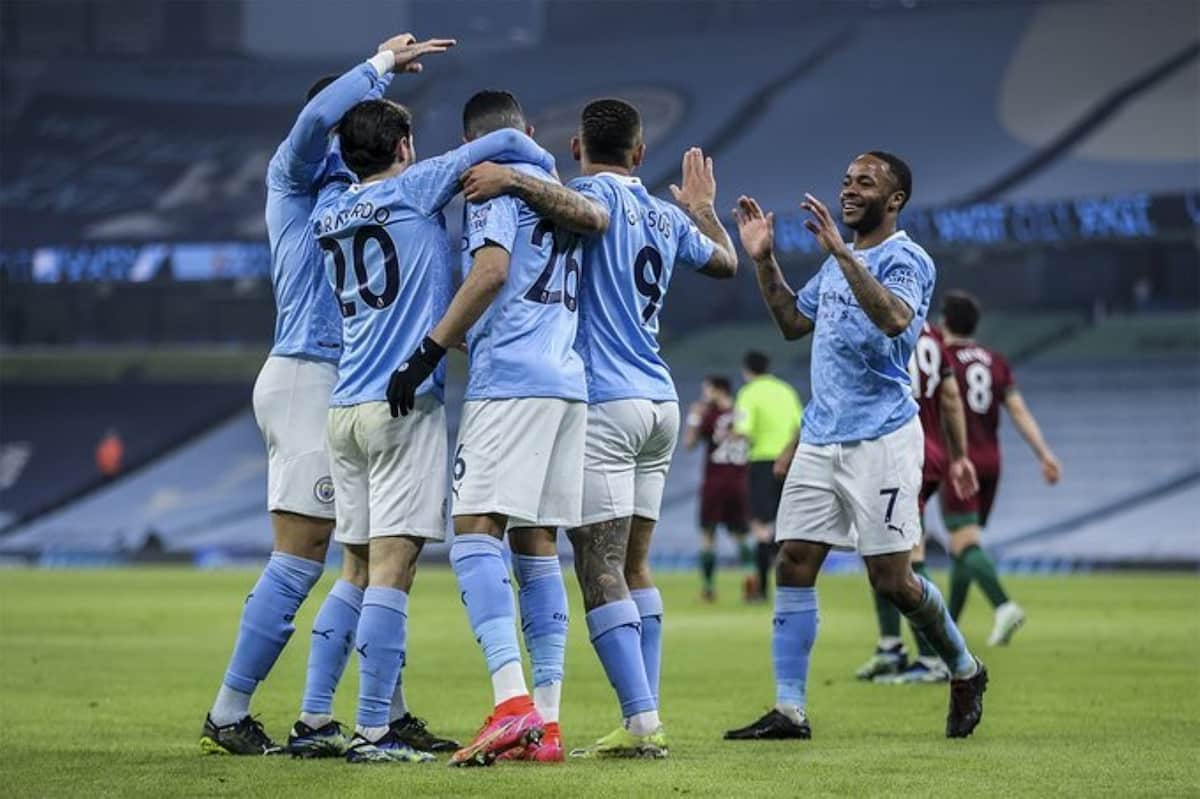
Table of Contents
Who Are the Most Tactical Football Managers?
Football tactics are forever changing and in more recent years, tactical strategies have come a long way. Here are some of the most tactical football managers in the modern game:
- Pep Guardiola
- Roberto De Zerbi
- Carlo Ancelotti
- José Mourinho
- Thomas Tuchel
- Julian Nagelsmann
- Rúben Amorim
1. Pep Guardiola
Spanish manager Pep Guardiola has managed three top teams in Europe – Barcelona, Bayern Munich and Manchester City. But what makes him such a tactical mastermind? He’s consistently implemented different systems during his managerial career that encourage high-intensity, possession-based football.
One of the main characteristics of this style is high possession. In fact, Guardiola’s obsession with keeping the ball is frightening. Teams that he’s managed have demanded so much possession that many opponents have to rely on counter attacking tactics in order to get something out of matches, which more often than not, fails.
Another feature that makes up his side’s tactical blueprint is inverting the fullbacks. Guardiola is the first coach to have used this strategy when he started inverting Philipp Lahm in his Bayern Munich side. Inverting fullbacks helps teams during the build up phase, allowing them to create overloads in midfield. This helps them dominate and control possession.
More recently, Guardiola has enjoyed using João Cancelo as an inverted fullback and has started using Manchester City youth academy prospect Rico Lewis in that position too. This demonstrates that Guardiola’s philosophy is running right through the heart of the club, with young players coming up through the academy being taught how to play in his tactical systems.
Something else that’s impressive from a tactical point of view is when Guardiola led Manchester City to the Premier League title without having a recognised striker in his squad. In the 2021-22 Premier League season, Guardiola would regularly deploy players such as Phil Foden as a false 9 in a 4-3-3 formation. He had to adapt his tactical approach to get the most out of this formation, ensuring that Manchester City could still score plenty of goals.
Guardiola’s tactical philosophy has influenced many high profile players and upcoming managers. He’s won the most available honours in European football, including the Champions League, La Liga, the Premier League and the Bundesliga title. He was the first name on our list when thinking about the most tactical football managers.
2. Roberto De Zerbi
Italian football manager Roberto De Zerbi first started making a name for himself as the manager of Serie B side Benevento. But what do Roberto De Zerbi’s tactics look like? He side caught the attention for playing an exciting brand of football, which involved overloading players at the back. These players would make lots of short, sharp passes which aim to lure in opposition players.
By doing this, De Zerbi’s men would create spaces where they can break into quickly. The key to his side’s identity is the change in tempo. While playing with the ball at the back, the tempo would be steady, but once spaces have been created, there is a significant increase in the team’s tempo. If successful, De Zerbi’s teams look to break incredibly quickly down the pitch.
He then earned a move to Serie A side Sassuolo where he achieved two consecutive 8th place finishes. They also narrowly missed out on UEFA Conference League qualification to Roma on goal difference at the end of the 2020-21 season. It was claimed that De Zerbi massively overachieved with the squad at his disposal during his time at Sassuolo.
A tenure at Shakthar Donetsk followed, where he had a taste of Champions League football before moving to the Premier League with Brighton. During his time as a manager, De Zerbi has been refining his style of play. As of the 2022-23 season, Brighton are playing trademark De Zerbi ball.
They successfully provoke their opponents into pressing them before playing passes around or over them to produce quick build up play. The overloads at the back require a strong ball playing goalkeeper who is able to play those quick passes around opposition forwards.
So far, De Zerbi ball has been a huge success. In his first 15 games at Brighton, they’ve scored 55 goals and two of those games were 0–0 draws. This shows that Roberto De Zerbi’s tactics produce lots of goals, and also strong xG stats.
Watch De Zerbi ball in action during this Brighton mid-pre-season friendly against Aston Villa:
3. Carlo Ancelotti
One of the most tactical football managers of all time, Carlo Ancelotti, doesn’t have much left to achieve in the game of football. He’s already won the following awards:
- 2x World’s Best Club Coach (2006 & 2013/14)
- 4x Champions League Winner (2002/03, 2006/07, 2013/14 & 2021/22)
- 2x FIFA Club World Cup Winner (2007/08, 2014/15)
- 1x English Champion (2009/10)
- 1x German Champion (2016/17)
- 1x French Champion (2012/13)
- 1x Italian Champion (2003/04)
- 1x Spanish Champion (2021/22)
- 4x UEFA Supercup Winner (2003/04, 2007/08, 2014/15 & 2022/23)
- 1x English FA Cup Winner (2009/10)
- 1x Spanish Cup Winner (2013/14)
- 1x Italian Cup Winner (2002/03)
- 2x German Super Cup Winner (2016/17 & 2017/18)
- 1x Spanish Super Cup Winner (2021/22)
- 1x Italian Super Cup Winner (2004/05)
- 1x English Super Cup Winner (2009/10)
It takes an impressive manager to be consistently offered some of the most prestigious jobs in football. He’s managed Real Madrid twice, Juventus, AC Milan, Chelsea, Paris Saint-Germain and Bayern Munich.
After having a blip in his coveted managerial career with a spell at Everton, Ancelotti returned to Real Madrid to win La Liga and the Champions League to cement his status as one of the greatest managers of all time.
Carlo Ancelotti’s tactics are forever adapting, in fact he’s a tactical powerhouse. Having managed teams since 1992, he’s seen football tactics change a lot, and he has certainly moved with each tactical shift. He’s used a wide range of formations in his career, here are a few examples:
- 4-4-2 diamond (AC Milan)
- 4-3-3 (Real Madrid & PSG)
- 4-2-3-1 (Real Madrid)
- 4-4-2 (Napoli)
Breaking down the system he’s been using during his second stint at Real Madrid, Ancelotti has adopted a 4-3-3 formation, which is primarily set up to get the most out of the wide forwards, in particular Vinícius Júnior. Other players in these positions include Marco Asensio, Rodrygo and Federico Valverde.
Ancelotti’s Real Madrid team create nice rotations on the left side using Vinícius, full back Ferland Mendy and forward Karim Benzema. Vinícius often moves into the inside left channel, freeing up space for Ferland Mendy to make overlapping runs.
Benzema will also find himself in the left wide space, which allows Madrid to create overloads in these areas, as well as finding lots of success dropping deep in more of a false 9 role.
Real Madrid’s exciting attacking players are supported by three of the world’s best central midfielders in Toni Kroos and Luka Modrić. Kroos not only provides support on the left side for those rotations higher up, but he often switches play quickly once the opposition have been sucked into Real’s trap.
These three central midfielders have allowed Ancelotti’s Galácticos to control games with ease. Between them and the threat provided by the combination play of Vinícius and Benzema, Real are a tactical force to be reckoned with.
You’d assume a combination of the world’s best players and Carlo Ancelotti’s tactics would be successful, but his achievements in his first season back at Real Madrid have certainly been more than impressive.
4. José Mourinho
We couldn’t create a list of the most tactical football managers without mentioning Portuguese mastermind José Mourinho. One of the most iconic managers of all time, Mourinho, who is credited with the parking the bus tactic, is a tactically astute manager.
“The Special One” has managed at plenty of big teams including Porto, Chelsea, Inter Milan, Real Madrid and Manchester United. He’s got an honours list as long as your arm that includes two Champions League trophies, the first coming in the 2003/04 season with FC Porto, and the second with Inter Milan in the 2009/10 season.
For the majority of his managerial career, Mourinho has favoured a 4-2-3-1 formation, however he has had to adapt his formation choice at some clubs based on the players that are available to him.
At Tottenham Hotspur, Mourinho used a 4-2-3-1 or a 4-3-3. José Mourinho’s tactics for this team primarily revolved around the two stand out attackers, Harry Kane and Son Heung-min. Kane gradually started taking up deeper positions in this side, which allowed the two wide players (Son plus one more) to exploit the wide spaces.
This would get the most out of Kane’s impressive long range passing ability. He was a goalscorer by nature, but a playmaker in this side too. He essentially had the freedom to operate in many spaces, sometimes finding himself in wider positions.
A resolute pivot in Pierre-Emile Hojberg and one of Moussa Sissoko, Tanguy Ndombele or Harry Winks allowed Spurs’ attacking fullbacks to push forward. Matt Doherty, Sergio Reguilón and Serge Aurier were all capable of providing great crosses from these wide positions. Kane would also have the ability to pick up clever spaces to finish off these crosses.
Out of possession, Spurs regularly used a mid or low block, the low block resembling a ‘parking the bus’ tactic that Mourinho once made famous. They’d set up in these blocks in a tight 4-4-2 and would hope to form a counter-attack following any opposition mistakes. Spurs became one of the best teams in transition this way, and this suited the players in their side.
Central midfielder Hojberg would sometimes drop deep to support the two central defenders to make up a back three, and this would encourage both fullbacks to move higher up the pitch. The aim here would be to achieve a 3-2-5 formation in the build up phase of play.
At Roma, Mourinho has adapted his formation to suit the players he has available, with centre forward Tammy Abraham regularly staying high up the pitch alongside the last defender. This is a different tactical set up compared to Tottenham. His favoured formation was again a 4-2-3-1, but they’ve also played regularly as a 5-3-2.
It’s safe to say that Mourinho is a shrewd tactician. Someone who has been managing since 2000 and has an honours list as long as his, certainly does his their job well. It’ll be interesting to see where the future takes him in the management world.
5. Thomas Tuchel
German manager Thomas Tuchel is one of the many managers inspired by Ralf Rangnick. In fact, he was hired by Rangnick at the start of his managerial career as youth team coach of VfB Stuttgart. He went on to win the Under 19 Bundesliga in the 2004/05 season.
Since then, he has managed Mainz 05, Borussia Dortmund, Paris Saint-Germain and Chelsea. He has made a name for himself in the football tactics world due to the styles of play he has implemented at these clubs.
During his most recent managerial stint at Chelsea, Thomas Tuchel tactics looked something like this – a 3-4-3 formation that encouraged fullbacks to play high up the pitch with two inside forwards operating within the inside channels behind a lone striker. These attacking players were supported by a strong midfield pivot with complimenting skill sets. A ball playing goalkeeper was preferable too.
When Tuchel arrived in London, he was spoilt for choice for players in some of these key positions. For example, in the two-man midfield pivot he had the luxury of picking from N’Golo Kante, Mateo Kovačić and Jorginho. Furthermore, he had some of the most attacking fullbacks in the Premier League at his disposal in Reece James, Marcos Alonso and Ben Chilwell.
As we mentioned previously, the fullbacks were encouraged to play high up the pitch in this system, and often they would often find themselves higher than the inside forwards. This meant that James, Alonso and Chilwell would be real goalscoring threats for opposition teams. They would lure out opposition defenders, leaving space in the inside channels for Chelsea’s forwards to exploit (Mount, Ziyech, Havertz, Werner & Pulisic).
The wide centre backs in Chelsea’s back three would also be encouraged to make positive runs with the ball. We saw this on plenty of occasions through Antonio Rüdiger and César Azpilicueta. They would provide further support down the left and right sides behind the advancing fullbacks.
As Chelsea became more comfortable with Tuchel’s methods, they started to create rotations in the high wide spaces. This meant that their fullbacks would regularly find themselves in the inside forward areas, posing further threats to opposition teams.
Out of possession, the high fullbacks would often drop into a back 5, providing their goal with lots of protection. They would set up in a 5-3-2 formation this way, with one of the inside forwards staying high up the pitch alongside the lone striker.
Chelsea’s press under Tuchel was also impressive. Fullbacks would press their opposite numbers aggressively, with each wide central defender providing cover just behind them. If the opponent targets the inside channel in these moments, the wide centre backs would also be aggressive, moving in line with the midfield pivot to press the opponents. On this occasion, the fullbacks would then tuck in behind to provide defensive cover.
Tuchel is a very tactical manager who already has a host of impressive jobs on his CV. Thomas Tuchel’s philosophy make him one of the most tactical football managers on the market. We expect he will continue to get big jobs in the game, adding to his already growing list of honours, winning the Champions League with Chelsea in the 2020/21 season.
6. Julian Nagelsmann
Another coach tapped up by Ralph Rangnick is Julian Nagelsmann. The German manager was part of an FC Augsburg squad managed by Thomas Tuchel, but he didn’t make an appearance due to a knee injury. The injury forced him to retire at just 20 years old in 2008.
Having already helped Tuchel with scouting duties in the first half of 2008, he went on to study sports science before committing all of his time to coaching. His first job was at one of his old clubs, 1860 Munich, where he was the assistant to Alexander Schmidt for Munich’s U17 team.
He’s had managerial stints at 1899 Hoffenheim, RB Leipzig and Bayern Munich. At the time when he was appointed 1899 Hoffenheim manager, he was 28, becoming the youngest manager in Bundesliga history. Rangnick was behind the decision for RB Leipzig to recruit Nagelsmann from Hoffenheim in 2019. He achieved a third place finish with Leipzig in the 2019/20 season.
Julian Nagelsmann’s tactics are based on intense high pressing out of possession and fluid, attacking football in possession. This has been a trademark of many great modern teams, including Liverpool.
His obsession with tactics is unorthodox, and he’s fascinated by the use of technology in football. During his time at Hoffenheim, Nagelsmann used a large screen at their training ground to improve player positioning. He found this approach more efficient than having long pauses during the sessions to discuss those position tweaks. It’s also widely known that he likes his training sessions to carry a high intensity.
During his managerial career, Nagelsmann has experimented with a number of different formations including 4-2-3-1, 5-2-3 and 3-4-3. At Bayern Munich, he’s settled on a 4-2-3-1 that’s based around a double pivot of Leon Goretzka and Joshua Kimmich.
In possession, Canadian left back Alfonso Davies often pushes forward into a left forward position, while the other three defenders shuffle across to form a back three. The left forward, often Leroy Sané, will then move into a more central position. This creates overloads in midfield high up the pitch for Nagelsmann’s men.
The front four players will also rotate regularly, which makes it really difficult for opposition defences to stay with their men. This creates pockets of space for one of the pivot players to move into. When done well, this creates a really fluid attacking style of play.
Although Nagelsmann is a young manager in football, he’s already made history on a number of occasions:
- At the age of 28, Nagelsmann became the youngest coach in Bundesliga history when he joined Hoffenheim.
- In 2019, he became the youngest Bundesliga coach to manage 100 matches.
- In March 2020, he became the youngest coach to win a UEFA Champions League knockout match.
- His RB Leipzig side reached the semi-finals of the Champions League in 2020, making him the youngest coach in history to reach that stage of the competition.
- He was appointed head coach of Bayern Munich for a world record €25 Million fee in 2021.
He has the potential to have a long managerial career where he can go on to make more history. As he’s spent all of his managerial career in Germany, it’s likely that we’ll see him explore opportunities elsewhere in Europe. He certainly has the tactical philosophy to compete in leagues like the Premier League, so let’s see what the future holds.
7. Rúben Amorim
An up-and-coming name on the football manager circuit is Portuguese coach Rúben Amorim. To date, the Sporting Lisbon manager has spent all of his managerial career in Portugal, and only started managing sides since 2018. After winning 10 games out of 13 for Braga, Sporting Lisbon came calling, taking a punt on the sought after young coach. They even paid Braga to buy him out of his contract.
During his full first season at Sporting Lisbon, they won the domestic double, winning their first title in 19 years. They only lost one league game, and this came in the second to last game week of the season, when the title was already won. He was linked with a Premier League move to Aston Villa before Unai Emery was appointed.
So why are Rúben Amorim’s tactics catching the attention of so many? It’s clear that he achieves impressive results, but how does he do it? It all starts with a resolute back three. What’s different to the traditional back three is that the two outside centre-backs are the furthest back, while the middle centre back plays higher up the pitch in line with the double pivot.
From there, the two outside centre halves try to play passes into the double pivot as often as possible, where they can then play passes higher up the field to Sporting’s attackers in between the lines. If this isn’t possible, they will have an option to play passes to the wing backs instead.
So what do Rúben Amorim’s tactics look like higher up the pitch? Sporting’s forwards tend to operate within the inside channels. He encourages his forward players to play as a fluid front three, who keep rotating in order to find space in-between the opposition defensive and midfield lines.
The widest players in Amorim’s set-up are the full backs, who hold the width while the forwards target the inside channels, this is similar to Thomas Tuchel’s Chelsea. The goal here is to create overloads within the inside channels, so that Amorim’s side can move the ball around the opposition and up the pitch.
A really intense press makes up another arm of Rúben Amorim’s tactics. It’s one of the most impressive presses in Portugal, and it all starts with his forwards protecting the central spaces, aiming to force the opposition wide. If successful, the opposition will likely play a long ball and subsequently lose possession.
It’s highly likely that Ruben Amorim’s tactics are going to earn him a move to the Premier League at some point in the near future, so remember the name.

